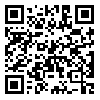Volume 21, Issue 2 (2015)
AIJH 2015, 21(2): 1-20 |
Back to browse issues page
Download citation:
BibTeX | RIS | EndNote | Medlars | ProCite | Reference Manager | RefWorks
Send citation to:



BibTeX | RIS | EndNote | Medlars | ProCite | Reference Manager | RefWorks
Send citation to:
Navab S, Nasri A. Philosophy of Art or Aesthetics in Islamic Knowledge/ Tradition. AIJH 2015; 21 (2) :1-20
URL: http://aijh.modares.ac.ir/article-31-8466-en.html
URL: http://aijh.modares.ac.ir/article-31-8466-en.html
Abstract: (10245 Views)
Art has not been extensively discussed in the Islamic tradition, except a few instances in the Islamic Jurisprudence. There is no discussion of the essence or definition of art in Islamic scholarly spheres, including philosophical spheres. One can find nothing comparable to the philosophy of art as found in the Western philosophy, especially after the Eighteenth century, in the philosophical or mystical works of Muslim scholars, except a few references to similar discussions in the Islamic mystical works as part of their larger discussions on Futuwwat-namahs or on light. However, there are extensive discussions on beauty in Islamic scholarly literature. Most philosophers have mentioned beauty as part of their discussion on existence. Some mystics also after discussing the beauty of God, have discussed about beauty in itself, expounding such terms as jama`l, husn, malaha, and so forth.Therefore, beauty and art in the Islamic tradition have to be discussed independently, and not in the framework of Western philosophy. What we have in Islamic tradition is aesthetics in its non-sensible kind. We have to avoid imposing Western philosophy on Islamic philosophy. Searching for common terms is not the right way for finding an Islamic philosophical system compatible to the Western philosophical system, relevant to the art that has developed in the context of Islamic culture and civilization.
Received: 2014/06/22 | Accepted: 2014/11/21 | Published: 2015/03/21
| Rights and permissions | |
 |
This work is licensed under a Creative Commons Attribution-NonCommercial 4.0 International License. |







